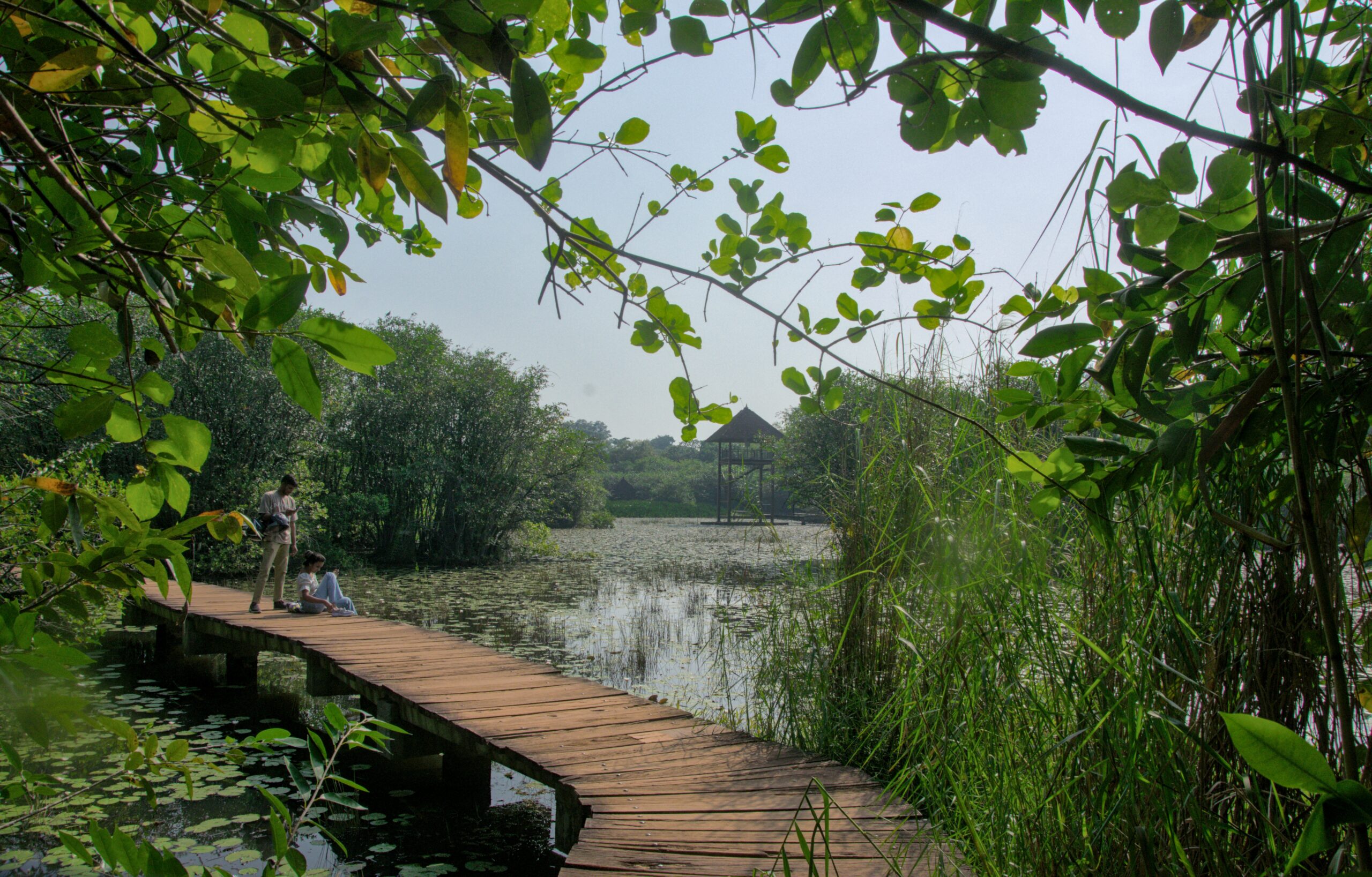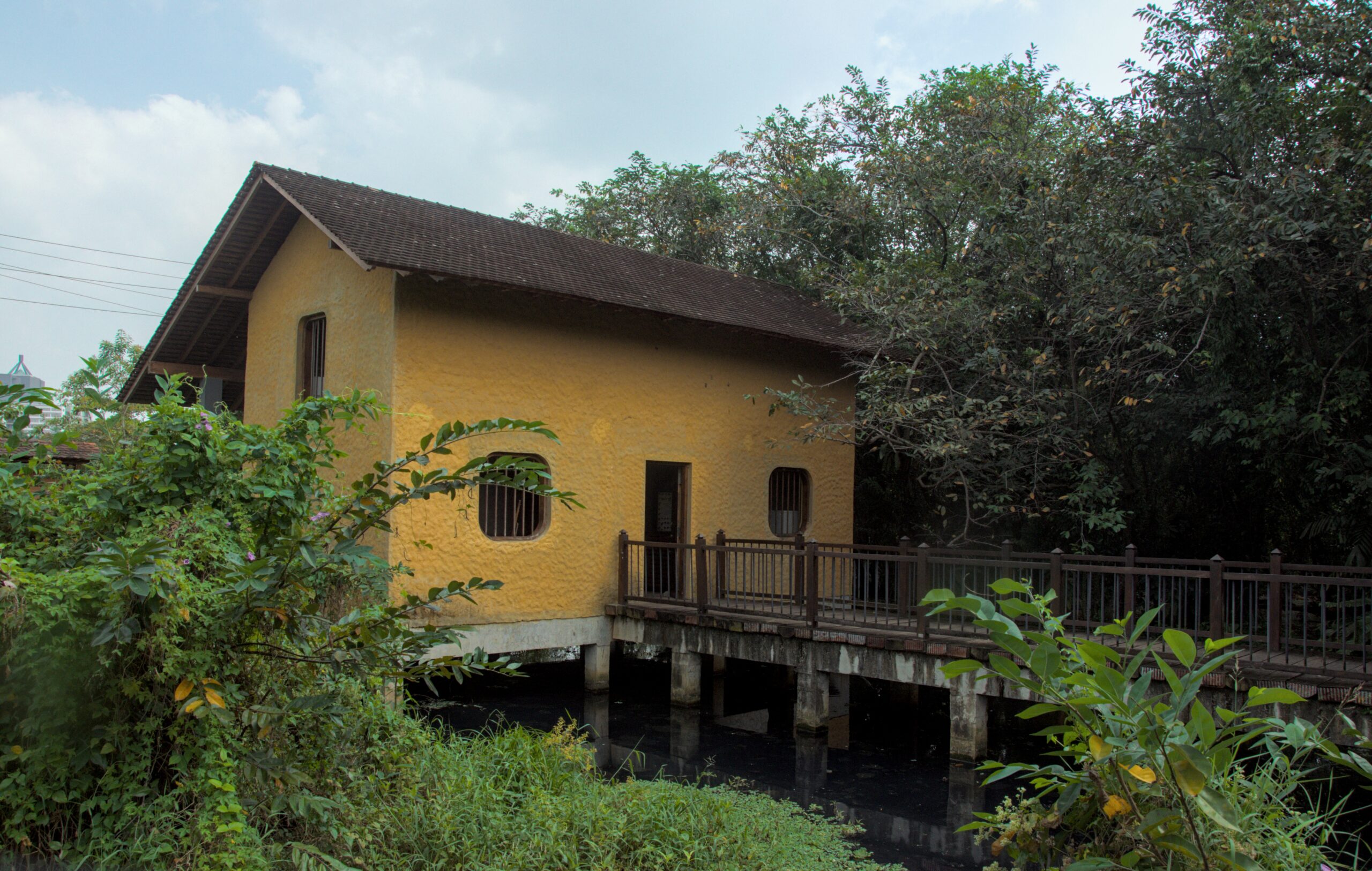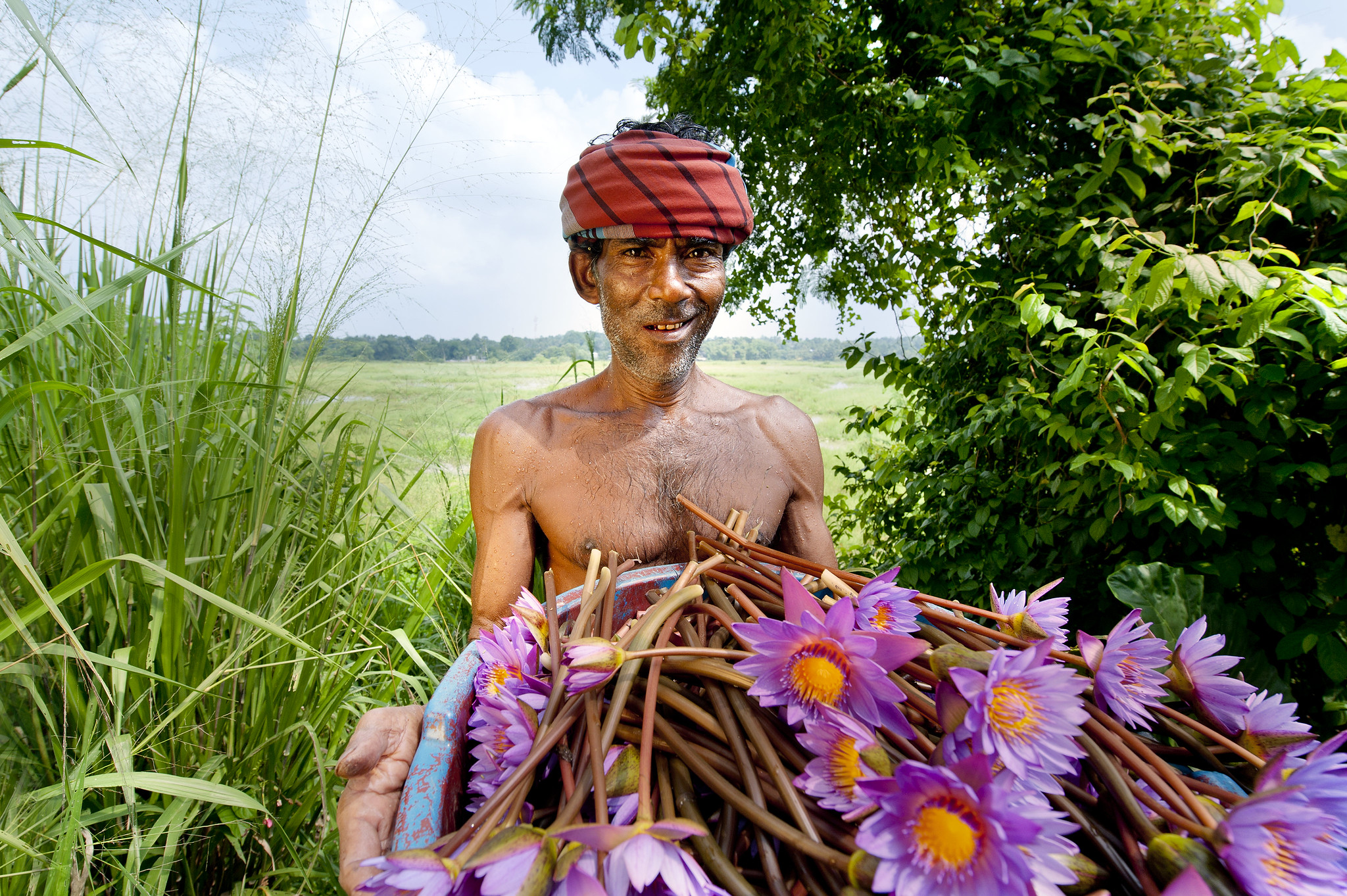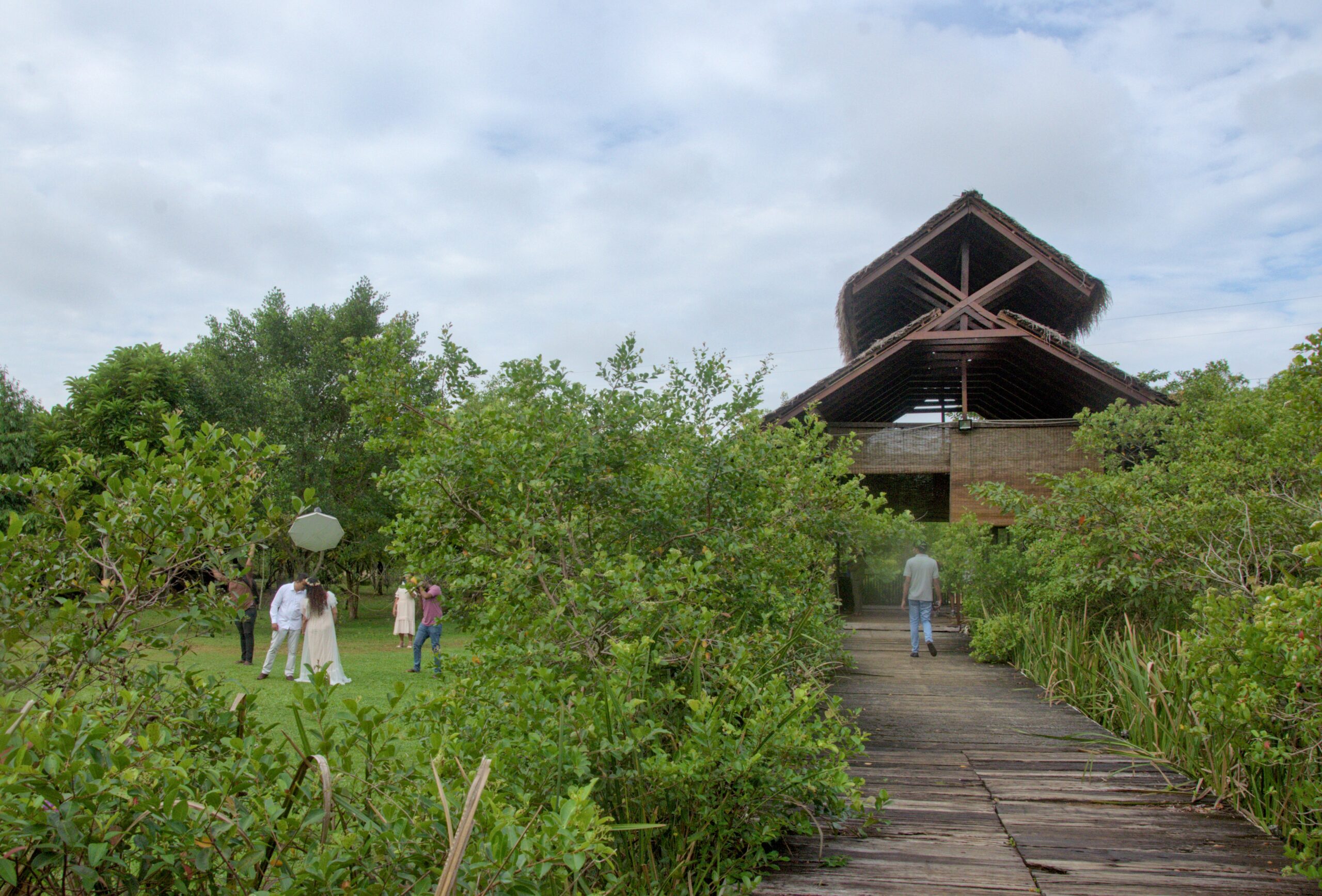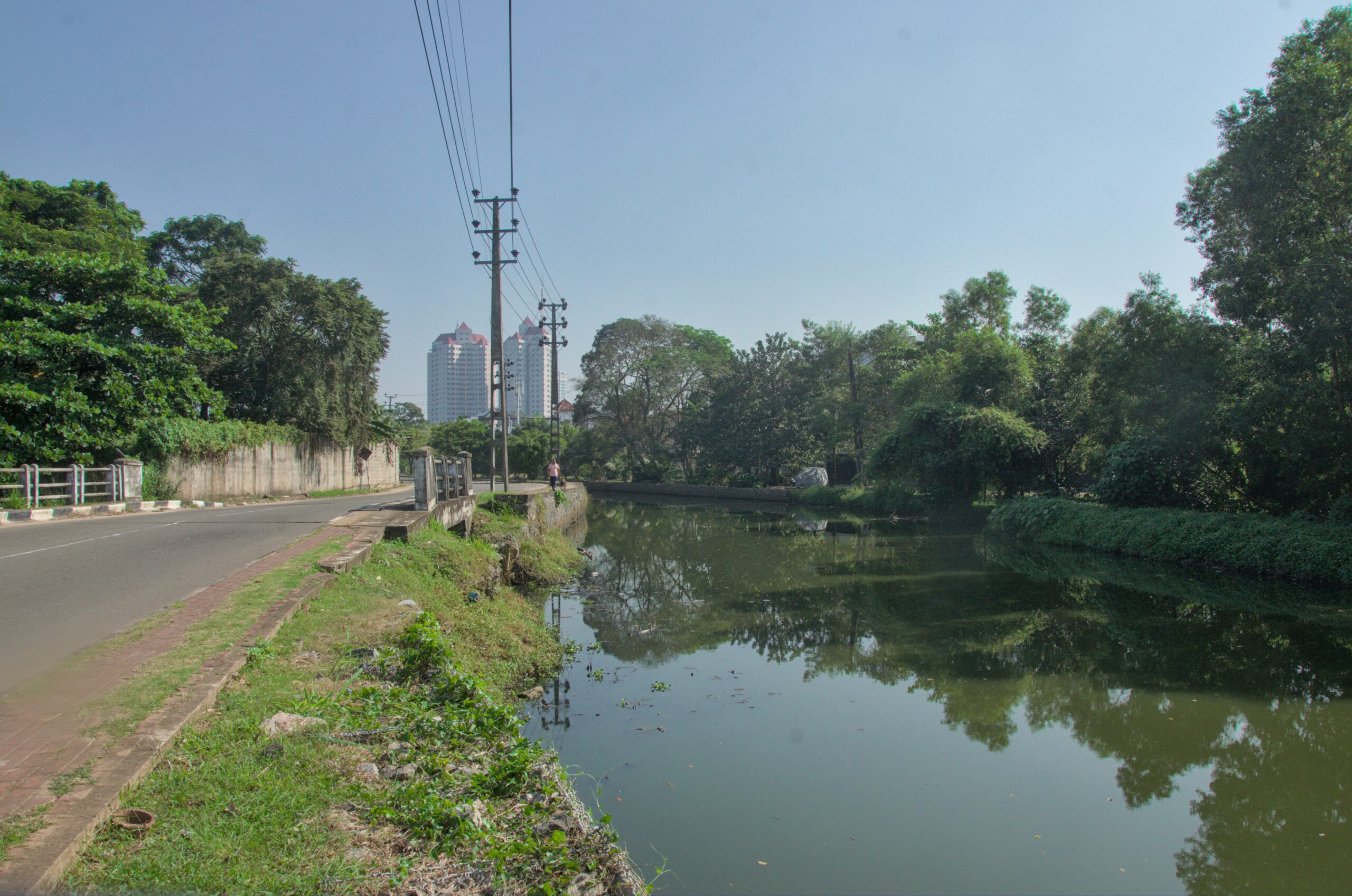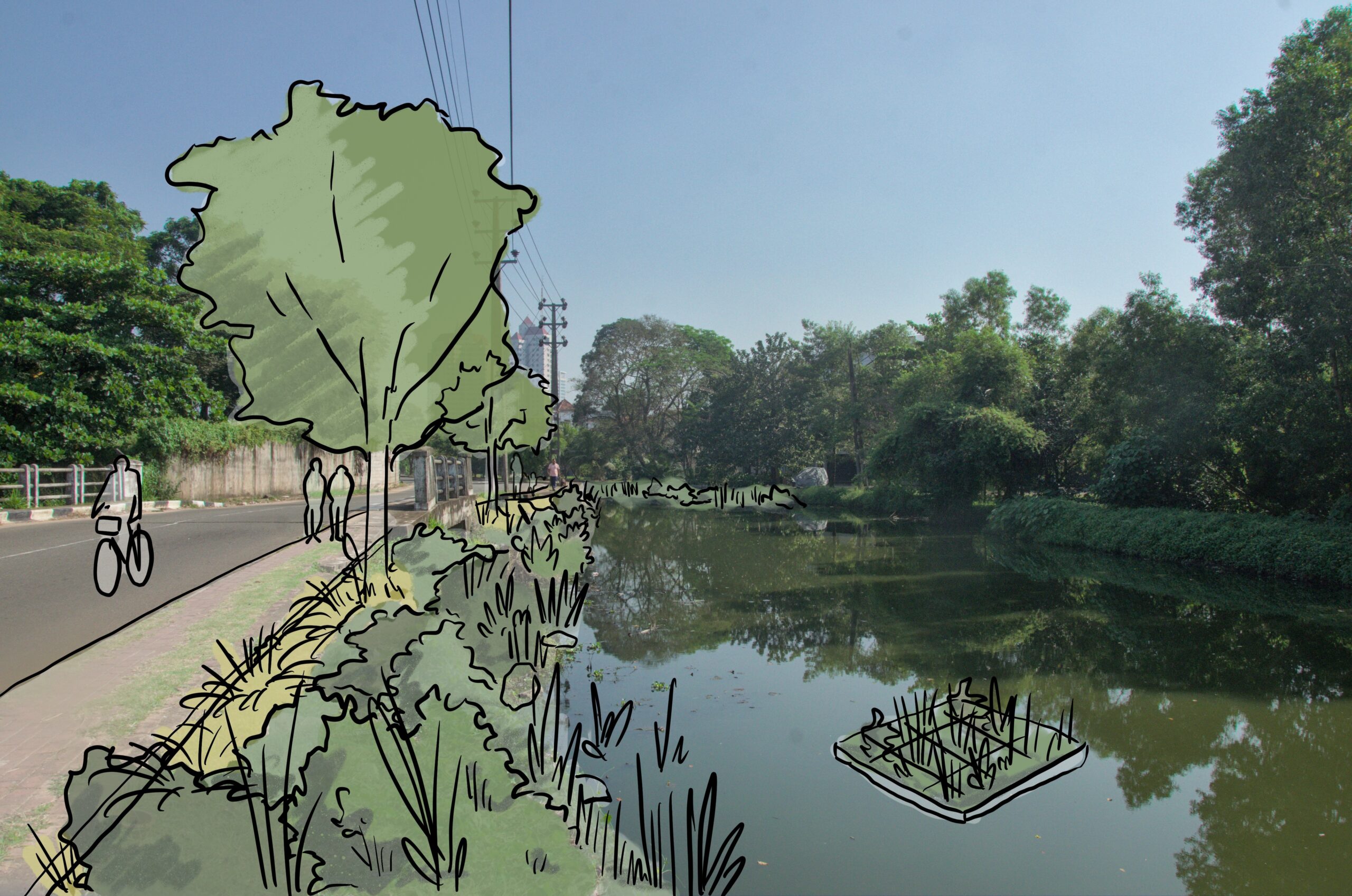By Laura Keil, Princeton in Asia Fellow
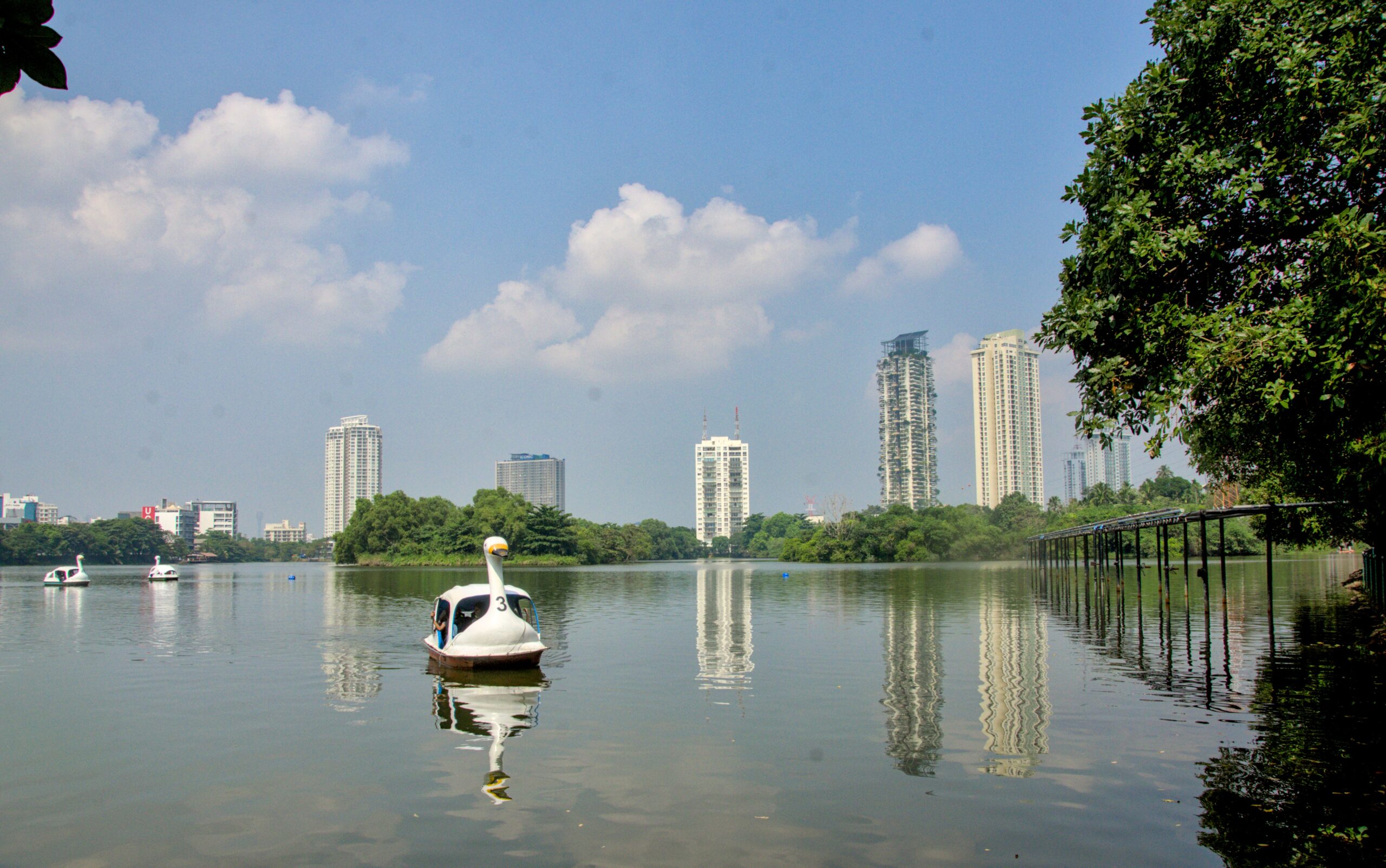
Sitting at the Kelani River delta on the west coast of Sri Lanka, set amidst a backdrop of shiny hotels, red-tiled colonial era-buildings and street markets, Colombo appears to be your typical Asian metropolis. But interspersed amongst the city’s built environment sit 19 kilometers of wetlands. Colombo’s urban wetlands make the city livable.
Every Colombo resident benefits directly or indirectly from various wetland services. Colombo was recognized in 2018 with Ramsar Wetland City Accreditation. This distinction is given to cities that deliberately value and protect the wetlands upon which they are built and provides an opportunity for governments to further invest in policies and practices that restore and protect wetlands. This October, Sri Lanka must justify the renewal of Colombo’s Wetland City status. In the 6 years since its accreditation, how has Colombo integrated wetlands into the urban landscape to build a more resilient and livable city?

Improve mental and physical health
Spending just ten minutes amongst wetlands is enough time to boost a person’s mood. The value of wetlands has only increased since the COVID-19 pandemic. The theme of this year’s World Wetlands Day highlights how human wellbeing is intricately linked to the health of the world’s wetlands. Wetlands improve mental and physical health by reducing flooding, cleaning pollutants, cooling the air, providing space for recreation, amongst other benefits. A 2017 study highlighted that Colombo’s wetlands regulate air quality, store carbon and control pest species. Wetlands are an integral part of urban systems with direct ties to and impacts on the built environment and our daily lives. They are as vital to cities as roads, sewage pipes, and electrical wires.
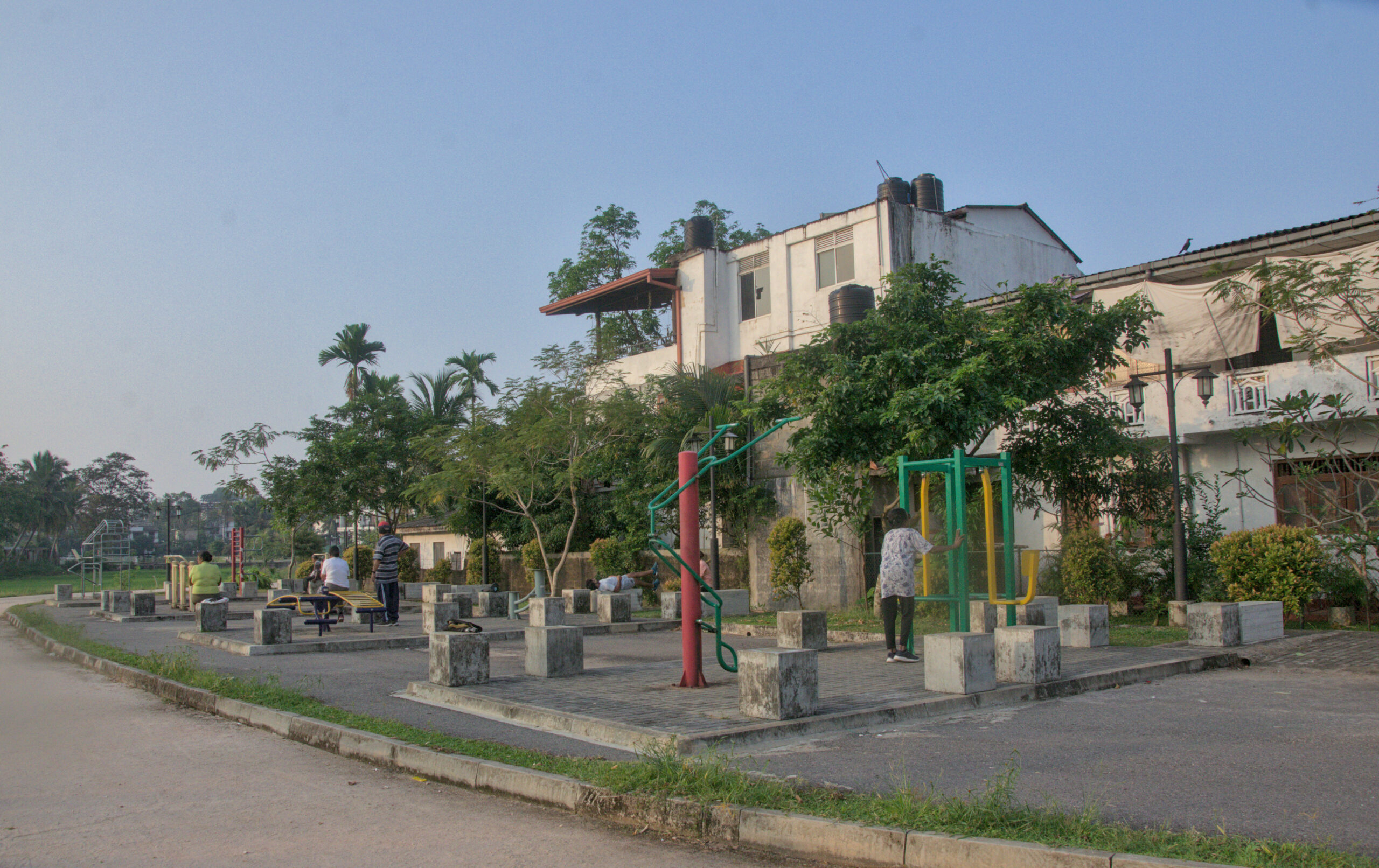
A main goal of the Urban Development Authority’s (UDA) ‘Colombo Commercial City Development Plan – 2019-2030,’ (CCCDP – 2019-2030) is to create a citywide network of green spaces linked by wetlands and waterways. Linear wetlands, such as canals and rivers, provide space for active travel and encourage physical activity. Colombo’s vision of parks along canals will improve the ecological function of urban waterways, detain stormwater flows, avoid encroachment into rivers, and provide more open space for residents to enjoy.
As another solution to control encroachment of wetlands and create public recreation space, the Sri Lanka Land Development Corporation (SLLDC) and UDA build walkways around wetlands. These tracks have been successful in minimizing intrusion into wetlands; however, garbage builds up along the border between these spaces. Incentives for environmentally conscious waste disposal, individual change, and improved governmental garbage management programs can improve the treatment of our environment.
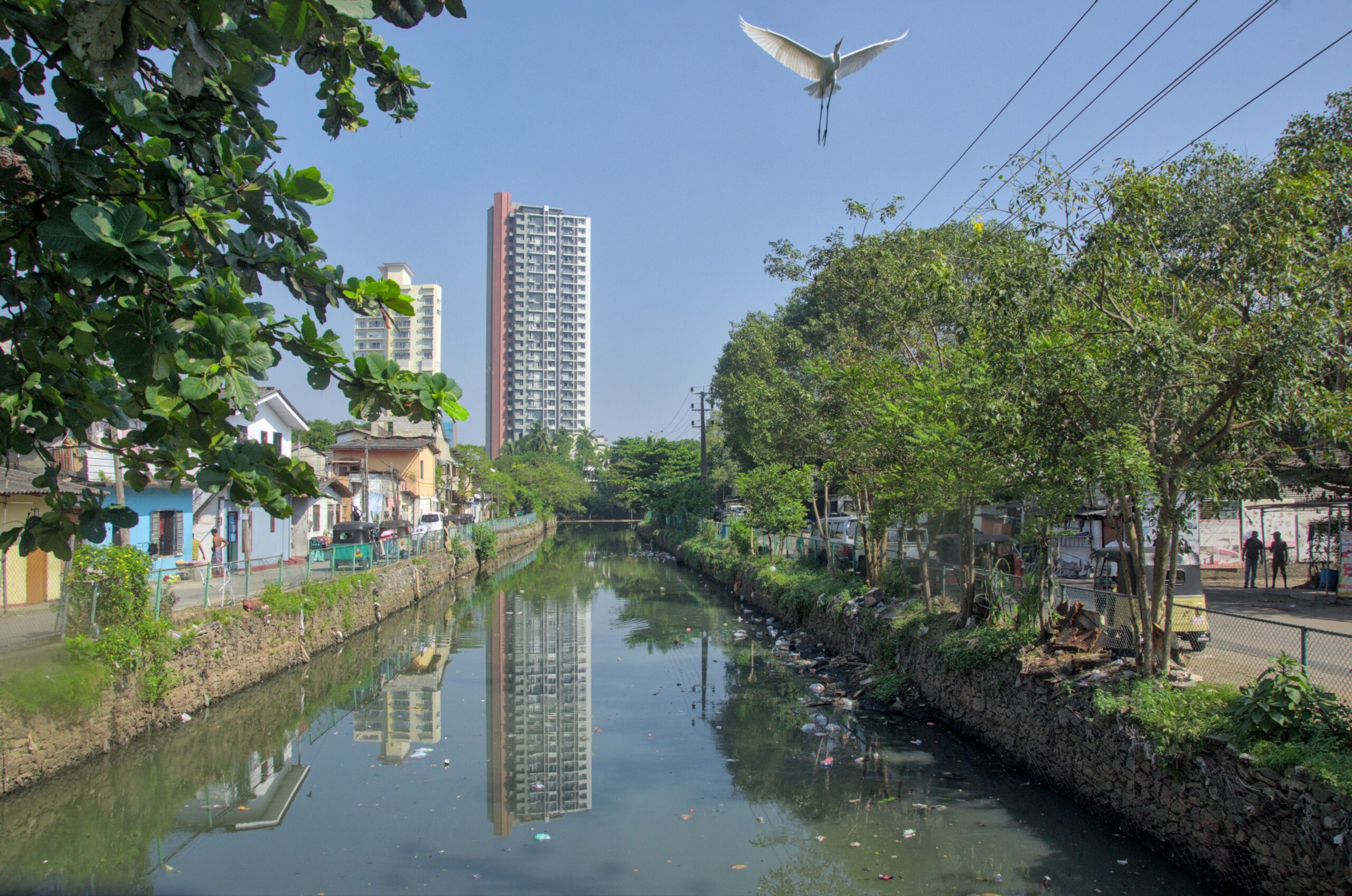
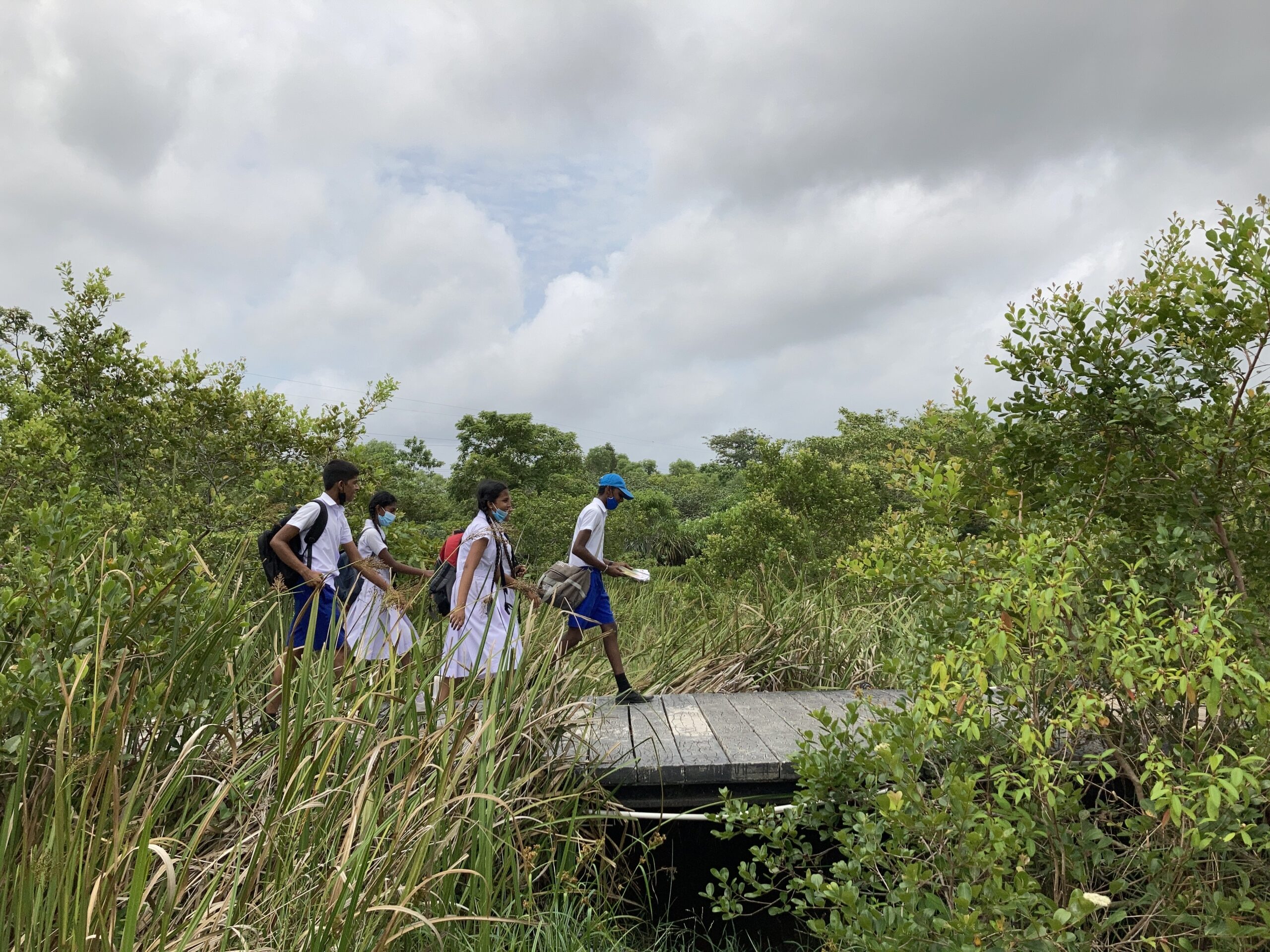
Connect us with each other and the natural world
Co-managing wetland protection with community and school groups creates opportunities for people to interact with wetlands where they may not have done so previously. The Increasing the resilience of biodiversity and livelihoods in Colombo’s wetlands project, funded by the Darwin Initiative and led by IWMI’s Matthew McCartney, aligns wetland monitoring and community engagement with government policies. Community members created participatory videos that identified best wetland management practices. These videos were shared with local stakeholders and government entities to inform conservation strategies.
A sub project called the ‘Colombo schools program’ was initiated during 2022 – 2023. Over a 6-month period, this program educated school children about the ecosystem services local wetlands provide. Additionally, “Wetlands Awareness Week” was implemented in schools by the Darwin project team and the Field Ornithology Group of Sri Lanka to inspire interest in wetland activities. Children participated in a biodiversity awareness program at Diyasaru Park during the week in 2022.
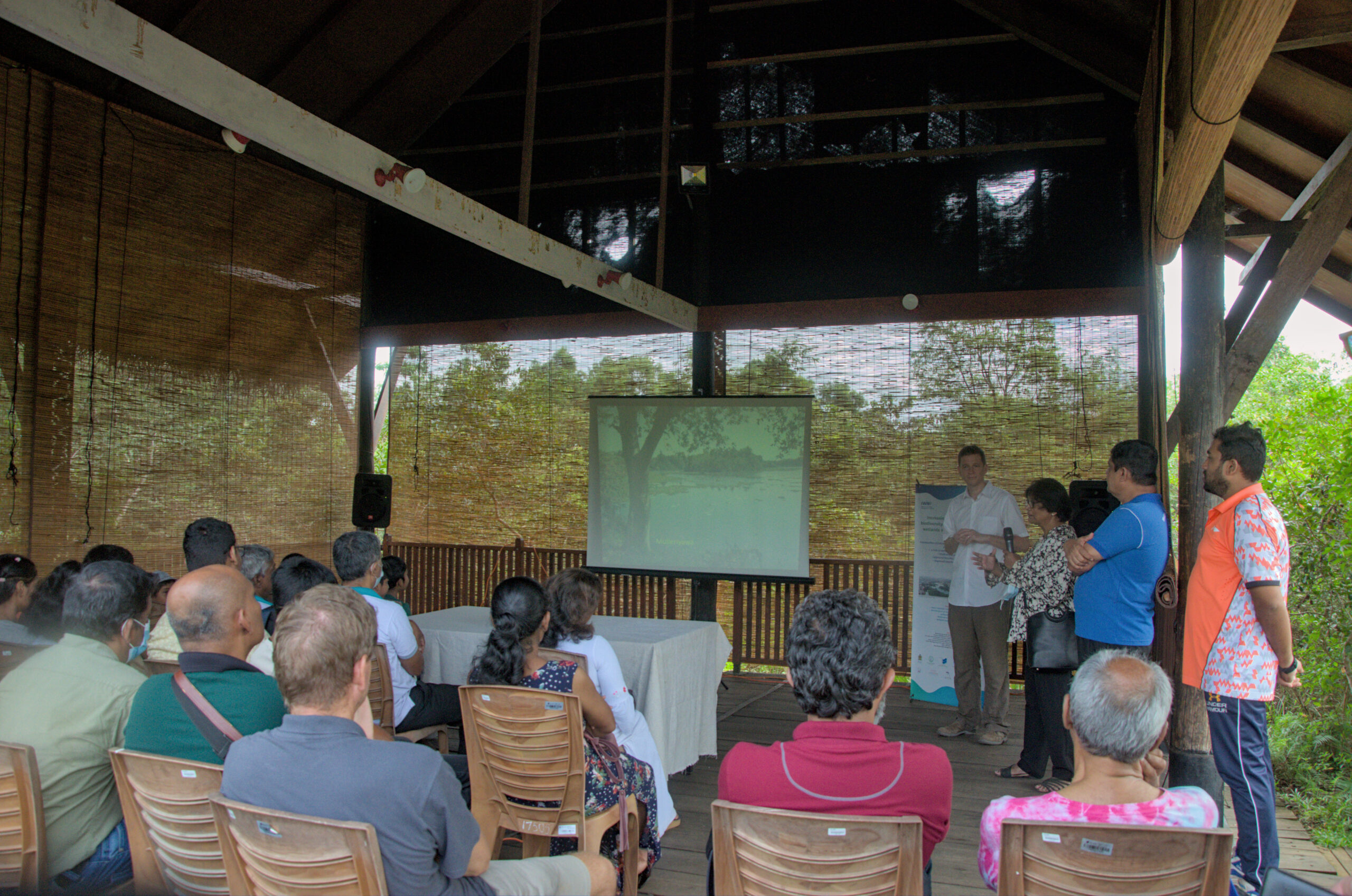
Improving access to urban wetlands increases human wellbeing. This can be done through the creation and management of wetland parks. Colombo’s newest and third wetland park, Kotte Rampart, opened to the public in February 2023. A fourth wetland park, Gothatuwa, is currently under construction. The CCCDP – 2019-2030 calls for the design of a recreational park in the Bellanwila – Attidiya Wetland, a key stopover site for several migratory birds and a significant roosting area for egrets and herons. Wetland parks provide opportunities for socializing and enhance biodiversity, thereby increasing community cohesion and allowing people to reconnect with nature.

Increase resilience to climate change
Amidst escalating climate impacts across South Asia, Colombo’s wetlands have become a vital resource for mitigating future challenges faced by the flood-prone city. Wetlands increase our resilience to the impacts of climate change by acting as sponges during flooding events. In periods of heavy rainfall, the city’s wetlands store millions of cubic meters of water. This is equivalent to over 27,000 Olympic-sized swimming pools. Wetlands, an example of green infrastructure, are combined with gray infrastructure (pipes, pumps, water management systems) in urban settings. Colombo’s blend of green and gray infrastructure makes the city resilient and is more cost-effective than alternative options.
Major cities like London and Hong Kong spend millions of dollars to create wetlands that help tackle pollution. Landscape architects in Bangkok, Thailand – another capital city built on wetlands and prone to heavy rains – are leading the design of multiuse public spaces that are meant to flood. Engaging Colombo’s existing wetlands allows us to adapt to the amphibious, ever-morphing nature of urban life in an era of climate change.
Since Colombo received Wetland City status, wetlands have been mainstreamed in the city’s development planning. The CCCDP – 2019-2023 proposes to “fully conserve all wetlands located within the boundary limits of the Commercial City as recommended by the Western Province Wetland Management Plan” which was adopted in 2016. In similar fashion, Rights Of Wetlands Operationalisation For Biodiversity And Community Resilience, a new project funded by the Darwin Initiative and co-led by IWMI’s Chaturangi Wickramaratne, will work with the Sri Lankan government to implement a Rights of Nature framework for wetlands. A radical shift from viewing wetlands as property to giving them legal status can help conserve biodiversity and promote beneficial human activities. This model has the potential to be successfully implemented in Sri Lanka if community members are included in the process and subsequent policies are enforced. While Colombo has made progress in the realm of wetland management since it received wetland city accreditation, there is more work to be done to reach the CCCDP’s 2030 goals.
Drawing of Kinda Canal edged with plants rather than remaining entirely channelized with embankments. Plants slow stormwater flows, allowing sediment and pollutants to settle before being treated. This intervention creates vital new public space. Floating wetlands, as illustrated in the canal, also improve the environment. Laura Keil / IWMI.
What is next for Colombo’s wetlands?
Colombo’s wetlands are managed by multiple institutions including the UDA, SLLDC, Department of Wildlife Conservation, Central Environment Authority, Biodiversity Secretariat of the Ministry of Environment, and others. Though these institutions recognize the ecosystem services provided by wetlands and have incorporated such values into decision-making processes, conflicts of interest remain, and no single organization or policy will be able to conserve wetlands alone. Utilizing a transdisciplinary approach that brings key parties to one table is vital for the future of Colombo’s wetlands. The protection and urban integration of wetlands can assist various stakeholders in achieving their goals and targets, given the numerous benefits these ecosystems offer.
A moratorium to prevent the filling of wetlands was passed in 2018, and a campaign is in progress to define wetlands as sanctuaries. This will further protect wetlands from development. Discussions of connecting wetlands across Colombo through a network of green spaces are underway. Though 17% of the total area of Colombo Commercial City is natural space, most of these areas are within the central Colombo Municipal Council limits. The peripheral areas of the Colombo Commercial City should be prioritized in the provision of public open space and wetland enhancement. Implementing various wetland interventions can effectively control flooding and offer numerous chances for residents to engage with nature right at their doorstep.
Green infrastructure must be incorporated into formal planning, design, and policy processes. If integrated with waste disposal and other elements of urban planning, wetlands can provide social, environmental, and economic benefits to cities. Each urban wetland fragment is critical, and we collectively bear a responsibility to safeguard them.
